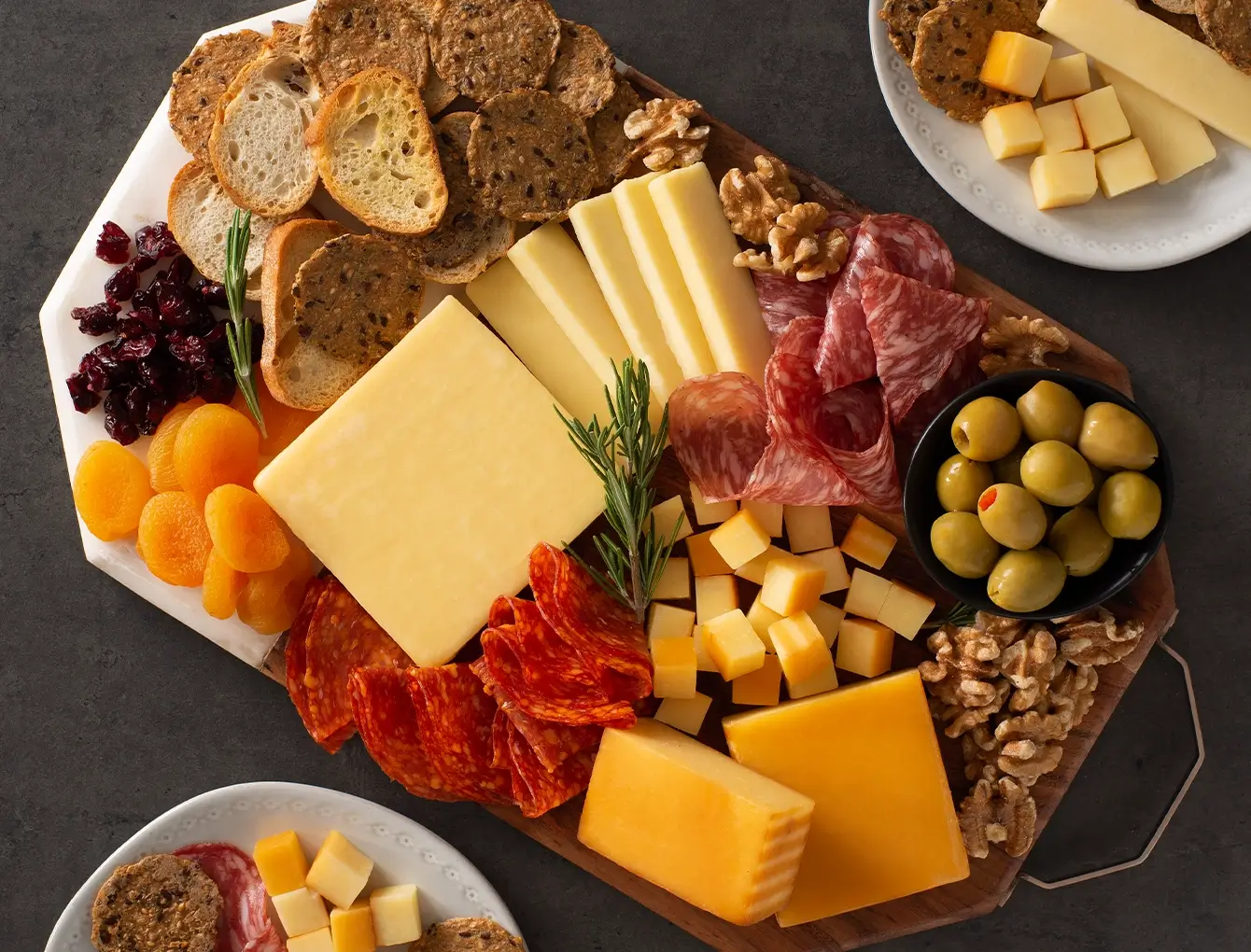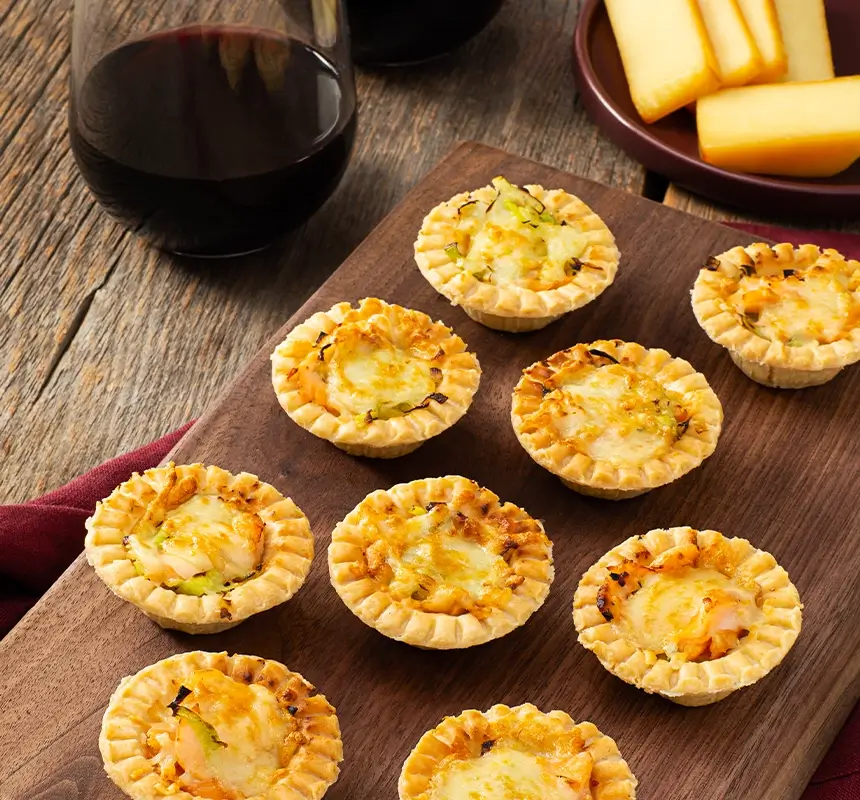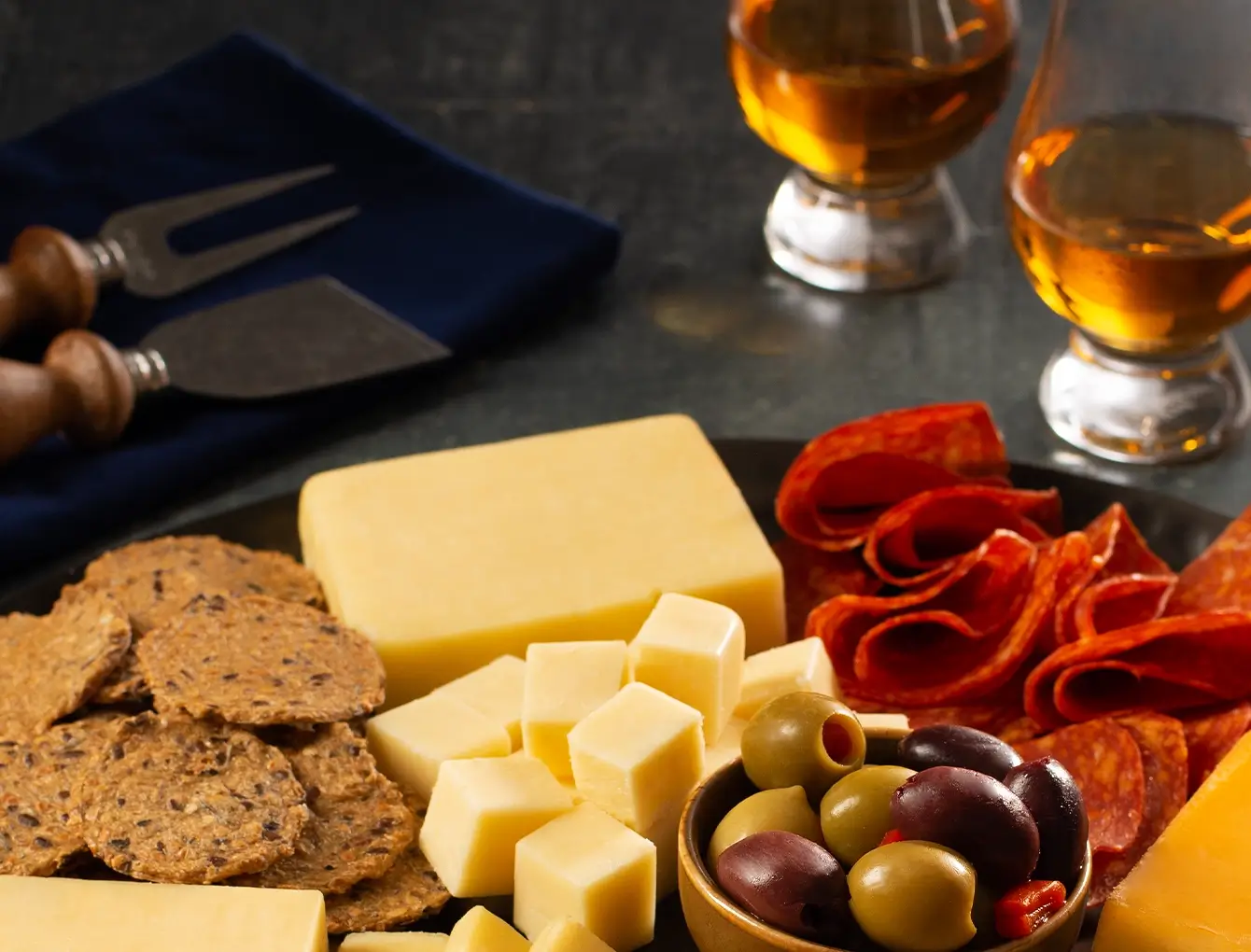The connection between wine and cheese is a celebrated culinary union that ensues when the complex flavour profiles and textures of cheese interact with the multifaceted aromas, acidity, and tannins of various wines.
The connection between wine and cheese is a celebrated culinary union that ensues when the complex flavour profiles and textures of cheese interact with the multifaceted aromas, acidity, and tannins of various wines.

Serve the cheese at room temperature to bring out all its special characteristics and flavours.
Cheeses with higher fat or moisture contents are better suited for lighter and white wines.
Aged cheeses that develop stronger flavours and aromas as they mature are better suited for more robust wines.
For a cheese plate, cheese board, or wine pairing, select a variety of cheeses that have range of texture, flavour, and visual appeal. If possible, select your variety from the same geographical region or country to give it a “terroir” appeal.
Both the wine and cheese go well when served with crackers and toasted breads that have complementary fruit flavours such as raisins, dates, figs, and other dried fruits. Avoid crackers that have salt or herbs added.



